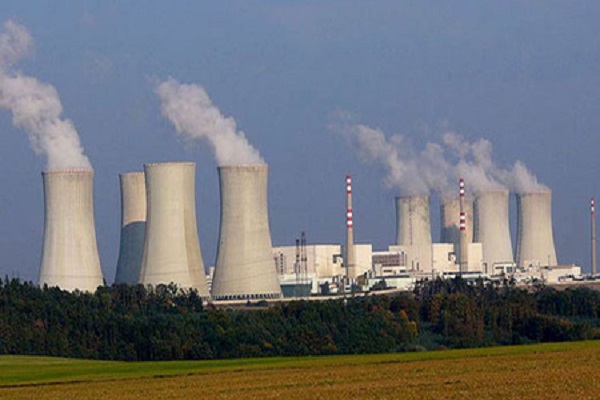Cottoncandy trading range for the day is 53530-54510 - Kedia Advisory

Gold
Gold prices rose by 0.93% to settle at 93,297, driven by renewed safe-haven demand amid concerns over the U.S. economic outlook and fiscal sustainability. The market sentiment shifted following Moody’s downgrade of the U.S. government's credit rating, citing persistent large fiscal deficits and surging interest expenses. This downgrade has amplified investor caution, boosting gold's appeal as a hedge against economic uncertainty and currency depreciation. Despite last week’s sharp decline of over 3%—the worst weekly performance since November, largely influenced by a positive shift in risk sentiment due to a temporary truce in U.S.-China trade tensions—gold rebounded strongly. Economic indicators in the U.S., including subdued inflation and weaker-than-expected macro data, have fueled expectations of additional rate cuts by the Federal Reserve later in 2025, further supporting gold prices. Physical gold demand saw a notable recovery across major Asian markets. In India, discounts widened to $34/oz over official prices due to recent price volatility, while Chinese premiums remained strong between $9-$50/oz. Singapore and Hong Kong witnessed moderate premiums, and Japan reported smaller margins of $0.25–$0.50/oz. Technically, the market is witnessing short covering, with open interest falling by 5.3% to 10,158 contracts. Gold finds support at 92,720, and a break below could lead to 92,145. On the upside, resistance is seen at 93,950, with potential to test 94,605 on sustained bullish momentum.
Trading Ideas:
* Gold trading range for the day is 92145-94605.
* Gold rose as investors sought safe-haven assets amid US economic and fiscal concerns.
* Moody’s downgraded the US credit rating due to high deficits and rising interest costs.
* US-China 90-day tariff truce eased global recession fears and boosted market confidence.
Silver
Silver prices settled slightly higher by 0.14% at 95,453, supported by expectations of lower global interest rates. Softer inflation data continues to fuel speculation of two rate cuts by the U.S. Federal Reserve this year, while other major central banks, such as the Bank of England and the People’s Bank of China, have already taken dovish steps by reducing benchmark and liquidity operation rates. The prospect of lower interest rates reduces the opportunity cost of holding non-yielding assets like silver, thereby enhancing its appeal. In the industrial space, silver continues to gain strong support from surging demand in solar energy applications. China’s wind and solar capacity touched nearly 1,500 GW in Q1 2025, aided by a 60 GW increase in photovoltaic capacity. Similarly, Europe reported a 30% annual surge in solar power output. This industrial growth has underpinned buying activity, particularly from the solar sector. Silver inventories in London vaults rose by 3.3% in April to 22,859 tons, the first increase since October 2024, indicating some recovery in physical holdings. Technically, the market shows signs of short covering with a 2.1% drop in open interest to 20,912 contracts while prices edged up 135. Support is seen at 95,090, and a break below could test 94,735. Resistance is likely at 96,025, with further upside potential towards 96,605.
Trading Ideas:
* Silver trading range for the day is 94735-96605.
* Silver remained supported by the outlook of lower interest rates by major central banks.
* Softer inflation reinforced bets on two Federal Reserve rate cuts later this year.
* There were 22,859 tons of silver held in London vaults in April, up 3.3 % from March, the LBMA said.
Crude oil
Crude oil prices edged lower by 0.56% to settle at 5,299, pressured by weakening economic indicators from China and a downgrade of the U.S. credit rating by Moody’s. China’s slowing industrial output and retail sales data raised fresh concerns over the strength of the world’s second-largest economy, which is a key driver of global oil demand. Additionally, Moody’s downgrade of the U.S. sovereign rating due to rising fiscal deficits and interest payments added to investor caution, dampening risk appetite and pressuring oil prices. Despite these headwinds, losses were limited due to geopolitical uncertainty surrounding Iran-U.S. nuclear negotiations, which could potentially disrupt crude supply flows. On the supply front, the latest U.S. Energy Information Administration (EIA) data presented a mixed inventory picture. Crude oil inventories rose by 3.5 million barrels to 441.8 million barrels, while gasoline stocks dropped by 1 million barrels and distillate inventories fell by 3.2 million barrels to 103.6 million barrels — the lowest level since April 2005. These sharp drops in refined product stocks reflect strong demand or tighter supply, which could provide support to crude prices. Technically, the market is under fresh selling pressure with open interest rising by 7.05% to 11,166, signaling increased bearish activity. Support is seen at 5,229, with a break below potentially leading to 5,160. Resistance lies at 5,370, above which prices could test 5,442.
Trading Ideas:
* Crudeoil trading range for the day is 5160-5442.
* Crude oil drops as weak China data and US credit downgrade pressure prices
* Figures showed a slowdown in the pace of China's industrial output and retail sales.
* However, losses in oil prices were limited by ongoing uncertainty surrounding Iran-US nuclear talks, which could affect global crude supply.
Natural gas
Natural gas prices plunged by 6.1% to settle at 267.9, driven by weaker short-term demand and a decline in LNG exports. Unseasonably warm weather across the U.S. through late May has significantly reduced heating requirements, while mild temperatures have also curbed cooling needs. This double impact has led to muted overall gas consumption. Additionally, flows to LNG export terminals have declined due to seasonal maintenance, easing pressure on domestic supplies and contributing to the downward price trend. On the supply front, average dry gas output in the Lower 48 states slipped to 103.6 billion cubic feet per day (bcfd) in May, down from 105.8 bcfd in April, indicating a slight retreat in production. However, the U.S. Energy Information Administration (EIA) continues to project rising output ahead, with dry gas production expected to increase to 104.9 bcfd in 2025 and 106.4 bcfd in 2026, surpassing the record of 103.6 bcfd set in 2023. The latest EIA storage report showed a substantial injection of 110 Bcf for the week ending May 9, well above the five-year average. Technically, the market is under fresh selling pressure, with a sharp 38.73% increase in open interest to 22,615 contracts as prices dropped 17.4. Natural gas finds support at 262.2, with further downside potential towards 256.5. Resistance is likely at 278.1, and a move above could open the path to 288.3.
Trading Ideas:
* Naturalgas trading range for the day is 256.5-288.3.
* Natural gas dropped due to weaker demand and reduced LNG export activity.
* Warmer May weather lowers heating demand, while mild temperatures limit air conditioning usage.
* LNG export terminal flows fell amid seasonal maintenance, boosting domestic gas supply.
Copper
Copper prices settled higher by 0.38% at 855.35, supported by tightening global inventories and a strong U.S. demand pull. London Metal Exchange (LME) copper stocks have dropped to a one-year low of 179,375 tons, with nearly 40% earmarked for physical load-out, signaling a growing scarcity. This depletion is largely tied to demand for deliverable copper brands under the CME contract, intensifying the supply squeeze. In China, Shanghai Futures Exchange (SHFE) inventories have also plunged, falling from a post-Lunar New Year peak of 268,337 tons to just 108,142 tons — a 60% month-on-month drop in April alone, marking the sharpest decline on record. Meanwhile, China’s refined copper imports declined 5% year-on-year and 20% quarter-on-quarter in Q1 2025, as supply was rerouted to the U.S. ahead of anticipated tariffs. April imports held steady at 438,000 tons year-on-year, yet cumulative imports for the first four months were down 3.9% to 1.74 million tons. From a fundamentals perspective, the global refined copper market posted a surplus of 61,000 tons in February, narrowing from January’s 90,000-ton surplus, with Chinese bonded warehouse adjustments reflecting a still-sizeable 76,000-ton overhang. Technically, the market is under short covering, with open interest declining by 15.89% to 3,420 as prices gained 3.25. Copper is finding support at 850.2, with further downside testing likely at 844.9. On the upside, resistance is expected at 858.7, and a breakout could push prices towards 861.9.
Trading Ideas:
* Copper trading range for the day is 844.9-861.9.
* Copper gains as LME copper inventory dropped to a one-year low.
* China’s refined copper imports dropped 5% year-over-year in Q1 2025.
* COMEX copper futures maintain premium over LME on U.S. tariff investigation concerns.
Zinc
Zinc prices edged slightly lower by 0.02% to 256.6 amid concerns over weakening demand in China, the world’s largest consumer. Recent economic data showed a slowdown in China's industrial output and retail sales growth in April, underscoring mounting pressure on domestic demand as the property market remains subdued. New home prices were flat for the second consecutive month, highlighting persistent stagnation in the sector despite ongoing policy support. On the global front, zinc fundamentals continue to reflect a mixed picture. The London Metal Exchange (LME) zinc inventory, which had previously climbed to a three-month high on April 17, has since reversed and declined to 169,850 metric tons. Although disruptions to overseas ore supply have been reported, the full impact on refined zinc production is still being assessed. Meanwhile, the rebound in zinc concentrate treatment charges (TCs) and rising sulfuric acid prices have improved smelter margins, prompting increased domestic production in China. Globally, the refined zinc market is expected to remain in surplus in 2025, according to the International Lead and Zinc Study Group (ILZSG). Output is forecast to rise by 1.8% to 13.73 million tons, outpacing the 1% growth in demand. Mined zinc output is also projected to increase by 4.3% to 12.43 million tons. Technically, the market is undergoing long liquidation, with open interest dropping by 5.14% to 1,791. Zinc has support at 256, and a breach could lead to a test of 255.3. Resistance is seen at 257.6, with further gains likely toward 258.5.
Trading Ideas:
* Zinc trading range for the day is 255.3-258.5.
* Zinc dropped following concerns over the demand outlook in China.
* China's industrial output and retail sales growth slowed in April
* LME zinc inventory rose to a three-month high on April 17, it entered a downward trend
Aluminium
Aluminium prices declined by 1.36% to 236.25, pressured by a notable rise in available stocks and increased global supply. On-warrant aluminium inventories at London Metal Exchange (LME) warehouses surged to 343,025 tons — the highest since December — after 92,950 tons were re-warranted, signaling weaker near-term demand. The cash-to-three-month contract spread flipped into a $2 discount, down from a $6 premium last Friday, reflecting a shift in market sentiment toward oversupply. In China, the world's leading aluminium producer, output rose by 4.2% year-on-year in April to 3.75 million metric tons. Cumulatively, production reached 14.79 million tons in the January–April period, marking a 3.4% increase over the same period in 2024. The rise in production coincides with weak macroeconomic indicators, including slower-than-expected factory output and retail sales growth, along with stagnant new home prices — all contributing to bearish market sentiment. Additionally, aluminium inventories at three key Japanese ports increased by 3.4% month-on-month in April to 320,300 tons. Improved alumina supply across Southeast Asia has also reduced production costs for smelters, encouraging higher output and further adding to the supply-side pressure. Technically, the market is under long liquidation, with open interest falling by 10.74% to 2,419 as prices dropped 3.25. Aluminium now finds support at 235.2, with further downside likely toward 234.2. Resistance is seen at 238, and a move above this level could push prices to 239.8.
Trading Ideas:
* Aluminium trading range for the day is 234.2-239.8.
* Aluminium fell after a jump in available LME stocks and rising output in China.
* On-warrant aluminium stocks in the LME system rose to 343,025 tons for their highest since December.
* The spread between the cash contract and three-month aluminium was last at a discount of $2 a ton on Monday.
Cottoncandy
Cottoncandy prices fell by 0.41% to 53,940 amid profit booking, following recent gains driven by tightening domestic supply estimates. The Cotton Association of India (CAI) has revised down its production forecast by 4 lakh bales to 291.30 lakh bales (170 kg each) for the 2024-25 season, primarily due to lower output in Maharashtra. The previous estimate stood at 295.30 lakh bales. The total cotton supply till the end of March, including imports and opening stock, is pegged at 306.83 lakh bales. This includes 25 lakh bales in imports and 30.19 lakh bales as opening stock. Stocks at the end of March are estimated at 127.83 lakh bales, with 27 lakh held by mills and the remaining 100.83 lakh bales with the Cotton Corporation of India (CCI), Maharashtra Federation, and traders. CAI projects cotton exports at 16 lakh bales for the 2024-25 season — significantly lower than the 28.36 lakh bales exported last year. Closing stocks for the current season are expected to drop to 23.49 lakh bales from 30.19 lakh bales last year. As domestic production shrinks, India’s cotton imports are expected to more than double to 33 lakh bales, up from 15.20 lakh bales last year, with 25 lakh bales already arriving at ports by March. Technically, the market is under long liquidation with a drop in open interest by 8.7% to 189. Cottoncandy has support at 53,740, with further downside likely to 53,530. Resistance is seen at 54,230, and a breakout could push prices to 54,510.
Trading Ideas:
* Cottoncandy trading range for the day is 53530-54510.
* Cotton dropped on profit booking after prices gained as CAI expects a shrinkage in the domestic crop further.
* Cotton exports for the 2024-25 season are pegged at 16 lakh bales, lower by 12.36 lakh bales over previous year’s 28.36 lakh bales.
* The closing stock for 2024-25 season at end of September 2025 is estimated lower at 23.49 lakh bales from same period last year’s 30.19 lakh bales. I
* In Rajkot, a major spot market, the price ended at 25970.75 Rupees dropped by -0.45 percent.
Turmeric
Turmeric prices declined by 0.41% to settle at 14,574, primarily due to increased market arrivals and subdued export demand. Daily arrivals nearly doubled to around 57,500 quintals from 29,860 quintals in the previous session, putting short-term pressure on prices. However, the downside remains limited amid persistent concerns about lower yields and production despite an increase in sown area. Although the area under turmeric cultivation this season has expanded by 10% to 3.30 lakh hectares from last year’s 3 lakh hectares, untimely rainfall and unfavorable weather conditions have adversely impacted crop quality and yield. Key growing regions like Nanded have reported small rhizome sizes and instances of crop rot, which may lead to an estimated 10–15% decline in output compared to last year’s 10.75 lakh tonnes. Export trends show mixed signals. Turmeric exports during April–February 2025 jumped 11.51% year-on-year to 1,61,229.56 tonnes, compared to 1,44,585.64 tonnes in the same period last year. However, monthly exports in February 2025 declined by 2.97% compared to February 2024, highlighting intermittent weakness in global demand. On the import side, India witnessed a sharp 55.21% rise in turmeric imports during the same period, though February’s imports dropped 52.64% year-on-year, suggesting reduced foreign buying interest. Technically, the market is under long liquidation as open interest dropped marginally by 0.28% to 16,155 0. Immediate support lies at 14,470, and a break below could lead to a test of 14,364. Resistance is now seen at 14,664, with a potential upside towards 14,752 on a breakout.
Trading Ideas:
* Turmeric trading range for the day is 14364-14752.
* Turmeric dropped due to increased arrivals and owing to weak export enquiries.
* However downside seen limited amid persistent concerns about low arrivals and lower production estimates.
* Turmeric exports during Apr – Feb 2025, jump by 11.51 percent at 161,229.56 tonnes as compared to Apr – Feb 2024.
* In Nizamabad, a major spot market, the price ended at 14523.65 Rupees dropped by -0.54 percent.
Jeera
Jeera prices declined by 1.03% to settle at 21,240 amid subdued buying from domestic buyers and weak export demand. The fall was largely attributed to the conclusion of the retail season and ongoing inactivity from foreign buyers. Pressure also mounted due to comfortable supplies and tepid export interest, with total arrivals in major mandis rising to 32,900 bags from 28,000 bags in the previous session. The increased arrivals have added supply-side pressure on the market. The start of the new cumin crop in Gujarat, a major producing state, has been delayed by about a month due to unfavorable weather conditions affecting sowing in both Gujarat and Rajasthan. Demand remains low, and current export requirements are being fulfilled from existing stocks. On the export front, jeera exports during April–February 2025 rose sharply by 62.55% to 195,164.58 tonnes compared to the same period last year. However, monthly exports in February 2025 dropped 23.92% from January but were still 18.52% higher year-on-year. Imports declined significantly by 93.7% during April–February 2025, reflecting reduced dependency on foreign supplies. Technically, the market is under fresh selling pressure, with open interest rising by 2.35% to 6,654 contracts while prices fell by 220. Immediate support is at 20,940, and a break below could test 20,630. Resistance is likely around 21,730, with a move above this level possibly pushing prices toward 22,210.
Trading Ideas:
* Jeera trading range for the day is 20630-22210.
* Jeera prices dropped due to lower buying and weak export demand.
* The current season is expected to have similar production levels as last year due to better crop conditions.
* In Feb 2025 around 12,996.88 tonnes of jeera were exported as against 17,083.31 tonnes in Jan 2025 showing a drop of 23.92%.
* In Unjha, a major spot market, the price ended at 21616.4 Rupees dropped by -0.78 percent.
Views express by all participants are for information & academic purpose only. Kindly read disclaimer before referring below views
























